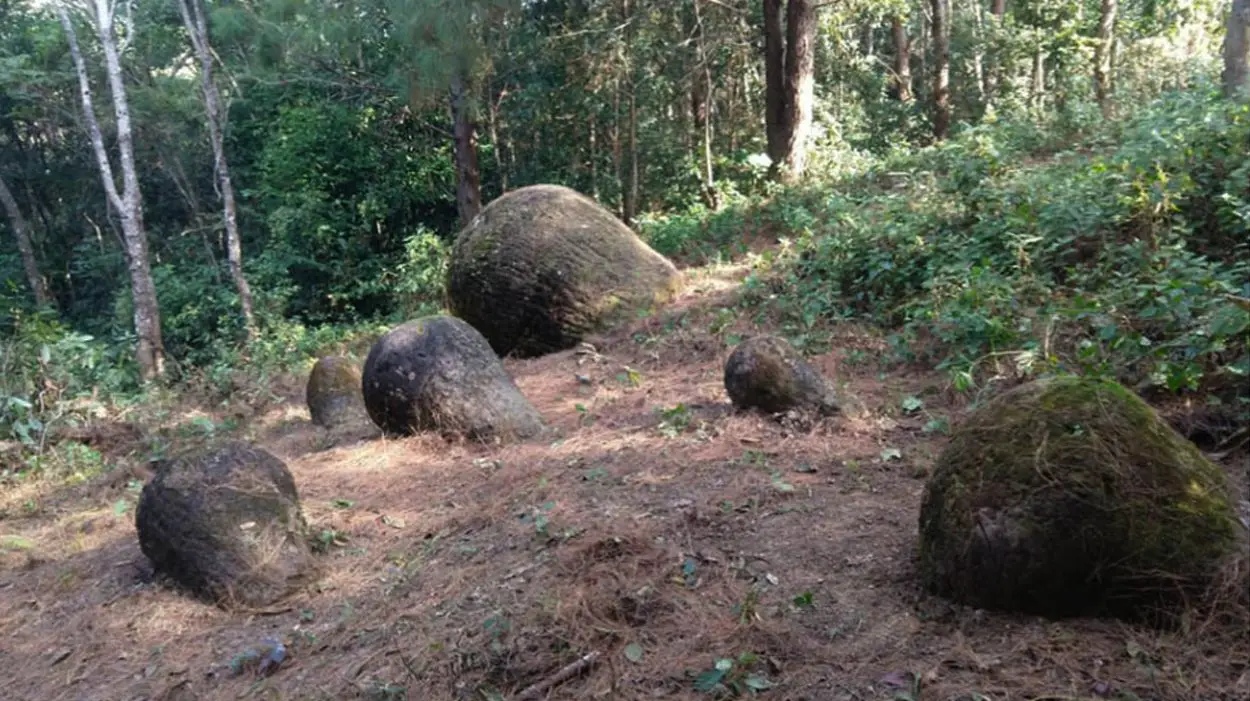In a new study published in the Journal of Asian Archaeology, archaeologists have uncovered giant stone jars used for ritual burials across four sites in Assam, India.
The study is part of a collaborative research project involving the Australian National University (ANU), the North Eastern Hill University and Gauhati University, in which the researchers have identified 65 sandstone jars.
Similar jars have been previously uncovered in Laos and Indonesia. The most famous stone jar concentrations are on the Xiangkhoang Plateau in Laos, where archaeologists have identified 120 megalithic sites with jars hewn from either sandstone, granite, conglomerate, limestone, or breccia at nearby quarries, or from boulders extracted from riverbeds.
The Assam jars vary in shape and decoration, some of which are cylindrical, and are either fully or partially buried in the ground. Archaeologists believe that the jars were used for ritual mortuary practices, although who made the Assam jars or where they lived is currently a mystery.
ANU PhD student Nicholas Skopal said: “It seems that there are no living ethnic groups in India associated with the jars, which means that there is an importance to maintain the cultural heritage.”
“There are stories from the Naga people, the current ethnic groups in north-east India, of finding the Assam jars filled with cremated remains, beads and other material artefacts” added Skopal.
The project was conducting a survey to explore the existing sites in Assam, but extended the survey reach to the surrounding densely forested regions. The researchers worked with local communities on the ground to uncover potential jar sites, often through areas of mountainous jungle that were difficult to navigate.
Header Image Credit : Tilok Thakuria





